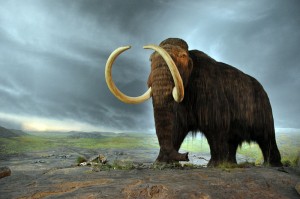Having the Asian Elephant as a close relative, the long extinct woolly mammoth now has hope to come back to life. Scientists are studying the possibility of having hybrid animals give birth to an animal that resembles the woolly mammoth.
Although it might sound like a remotely possible science fiction movie, the actual theoretical basis for the work is there. The first step in the process is creating the genetic map of the woolly mammoth (i.e., genome mapping). Reportedly, work in this area has already taken place, as researchers have done approximately 70% of the mapping work. Genome mapping is also needed to be done for the Asian elephant, so as to find differences and common genes between both animals. Once these differences are found, different genes are changed accordingly, and introduced into Asian elephant germ cells. Next step includes finding a surrogate Asian elephant and artificially inseminating it with new germ cells.
Mating comes next; hybrid elephants are left to mate, and after a few generations of breeding hybrids, woolly mammoth look-alikes are expected to be produced.
Theoretically speaking, these steps make perfect sense if scientists manage to find a way to introduce the modified genome into Asian elephant germ cells; a step which scientists are still developing means for, as it has never been done before in mammals.
Moreover, scientists should keep in mind that the created animal is going to be a look-alike, as it very likely scientists will not manage to fully recreate an identical genome map of the original animal, fully succeed in all steps, or even accurately predict exact results of each step. So the question now remains as to whether scientists will be creating a brand new animal, or an identical woolly mammoth that lives in totally different circumstances or environments in comparison to the ones they once lived in. Scientists need to think about recreating living conditions similar to these animals’ original environments, or enjoy watching them evolve into something different than the originally intended animal. One cannot help but wonder whether these things were well thought about and calculated before the beginning of the work.
Source: livescience
Photo source: Wikipedia, Model at the Royal BC Museum




